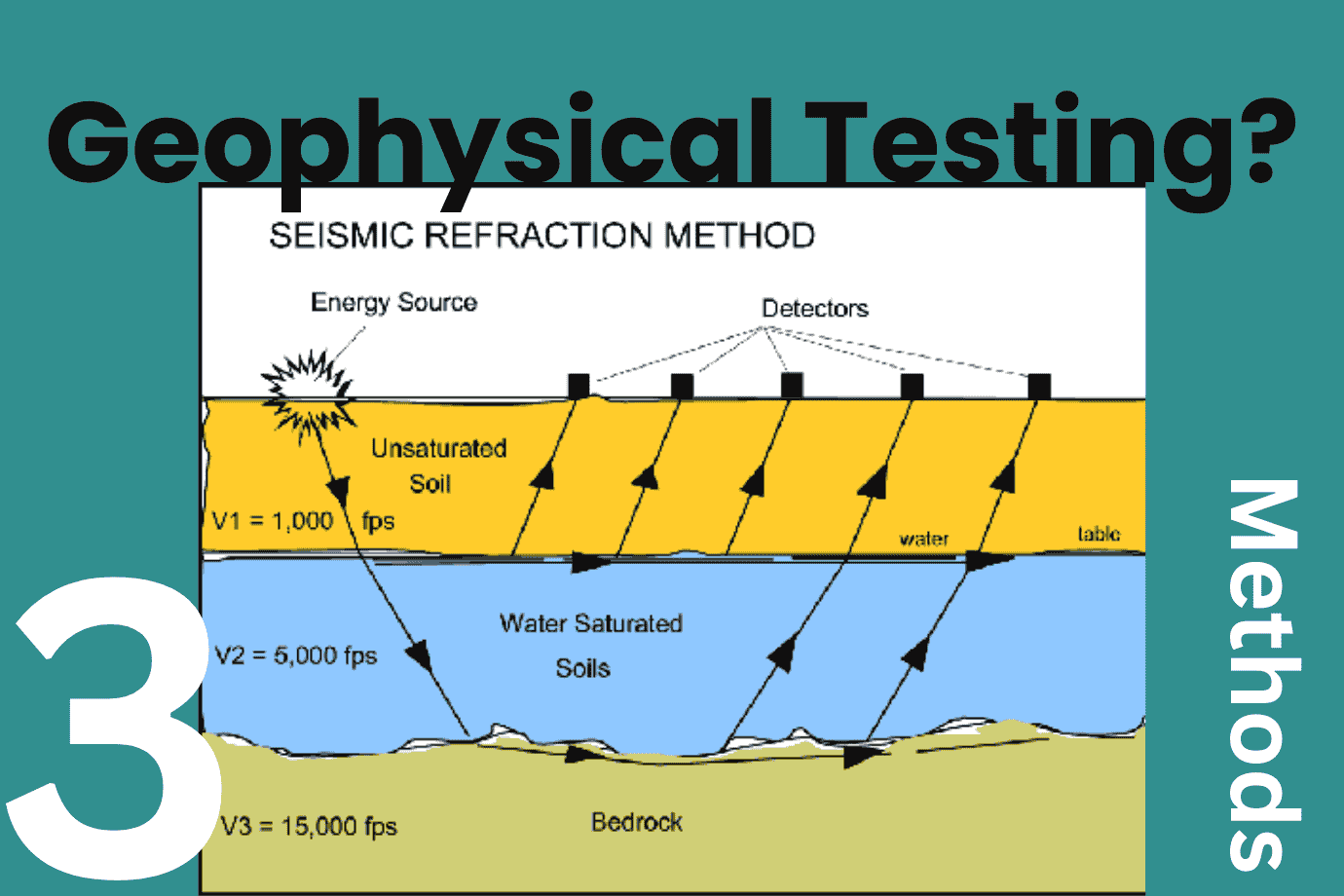Geotechnical investigations are essential to understanding the soil and subsurface conditions before embarking on any construction project. Among the diverse methods used, geophysical testing stands out as a non-invasive yet highly effective way to assess the underlying ground conditions. This article dives deep into geophysical testing methods, their applications, and how they complement traditional geotechnical techniques.
What is Geophysical Testing?
Geophysical testing involves the use of advanced tools and techniques to study the physical properties of the ground. Unlike traditional methods that often require drilling and sampling, geophysical testing provides a more efficient and non-invasive way to evaluate subsurface conditions.
Why is Geophysical Testing Important?
- Non-Invasive: Reduces the need for intrusive drilling or excavation.
- Cost-Effective: Offers a faster and more economical alternative to physical sampling in large areas.
- Comprehensive Analysis: Provides insights into subsurface anomalies, such as voids, groundwater levels, and rock formations.
- Safety Enhancement: Identifies potential hazards like sinkholes or unstable ground before construction.
Popular Methods of Geophysical Testing
1. Seismic Refraction
Seismic refraction is a widely used method for determining the depth and characteristics of subsurface layers.
- How It Works:
Seismic waves are generated on the surface, and their travel times are recorded as they pass through different soil and rock layers. - Applications:
- Identifying bedrock depth
- Assessing soil stiffness for foundation design
- Detecting fault lines or fractures
2. Electrical Resistivity
Electrical resistivity measures the resistance of the ground to an electric current.
- How It Works:
Electrodes are placed in the ground to pass a current and measure resistance, which varies with soil type, moisture content, and density. - Applications:
- Locating groundwater tables
- Detecting clay, sand, or rock layers
- Mapping contamination zones
3. Ground-Penetrating Radar (GPR)
GPR is a high-resolution geophysical method used to visualize subsurface features.
- How It Works:
High-frequency radio waves are sent into the ground, and the reflected signals are analyzed to map underground structures. - Applications:
- Identifying buried utilities or obstructions
- Evaluating concrete or pavement conditions
- Mapping underground voids or cavities
Advantages of Geophysical Testing
Non-Destructive Testing
Geophysical methods preserve the site’s integrity, making them ideal for sensitive areas like heritage sites or active urban settings.
Time and Cost Efficiency
Testing large areas without extensive drilling saves time and reduces costs significantly.
Early Hazard Detection
By identifying risks such as unstable ground, geophysical testing minimizes construction delays and safety hazards.
Versatility
Geophysical techniques can be adapted to different terrains and project requirements, from shallow soil analysis to deep rock exploration.
How Geophysical Testing Fits into Geotechnical Investigations
While geophysical testing is valuable on its own, it is most effective when combined with traditional geotechnical methods like drilling and soil sampling. The integration of these approaches provides:
- A Holistic View: Combining physical sampling with geophysical data ensures a complete understanding of subsurface conditions.
- Increased Accuracy: Geophysical testing refines areas of interest for further investigation, making targeted drilling more efficient.
- Enhanced Risk Mitigation: Comprehensive data minimizes surprises during construction, ensuring project stability and safety.
Case Study: Applications of Geophysical Testing in Urban Construction
Scenario: High-Rise Construction in Lahore
For a high-rise project in Lahore, geophysical testing was used to assess the bedrock depth and detect potential voids. Seismic refraction revealed a stable bedrock layer at 20 meters, while GPR detected underground utilities that were later avoided during excavation.
Scenario: Road and Bridge Development
In a road project near mountainous terrain, electrical resistivity helped locate groundwater levels and identify areas prone to erosion, enabling proper drainage design.
Geophysical Testing vs. Traditional Methods
| Aspect | Geophysical Testing | Traditional Methods |
|---|---|---|
| Intrusiveness | Non-invasive | Requires drilling and sampling |
| Cost and Time | More economical for large-scale assessments | Time-intensive and costlier |
| Scope | Suitable for preliminary and large-scale studies | Provides detailed localized data |
Conclusion: The Future of Geophysical Testing
As construction projects become more complex, geophysical testing is becoming an indispensable tool in geotechnical investigations. Its non-invasive nature, combined with cost and time efficiency, makes it ideal for ensuring safe, sustainable, and successful construction. By integrating geophysical methods with traditional geotechnical approaches, engineers can build with confidence on a solid foundation.
FAQs
What is the purpose of geophysical testing?
Geophysical testing is used to study subsurface conditions without excavation, providing critical data for construction and land development projects.
What is the most common geophysical test?
Seismic refraction and electrical resistivity are among the most commonly used methods due to their versatility and effectiveness in different soil conditions.
Can geophysical testing replace traditional soil testing?
While geophysical testing provides valuable preliminary data, it is most effective when used alongside traditional methods like soil sampling and laboratory tests.



